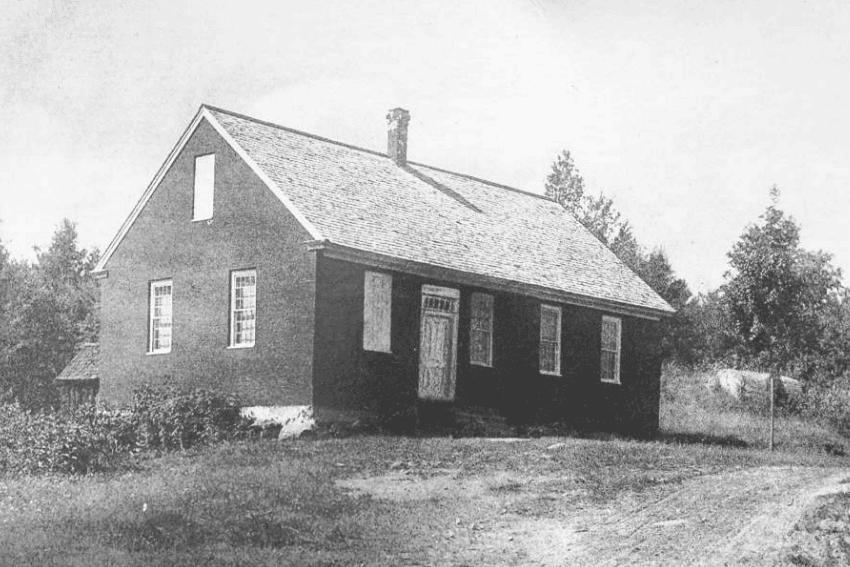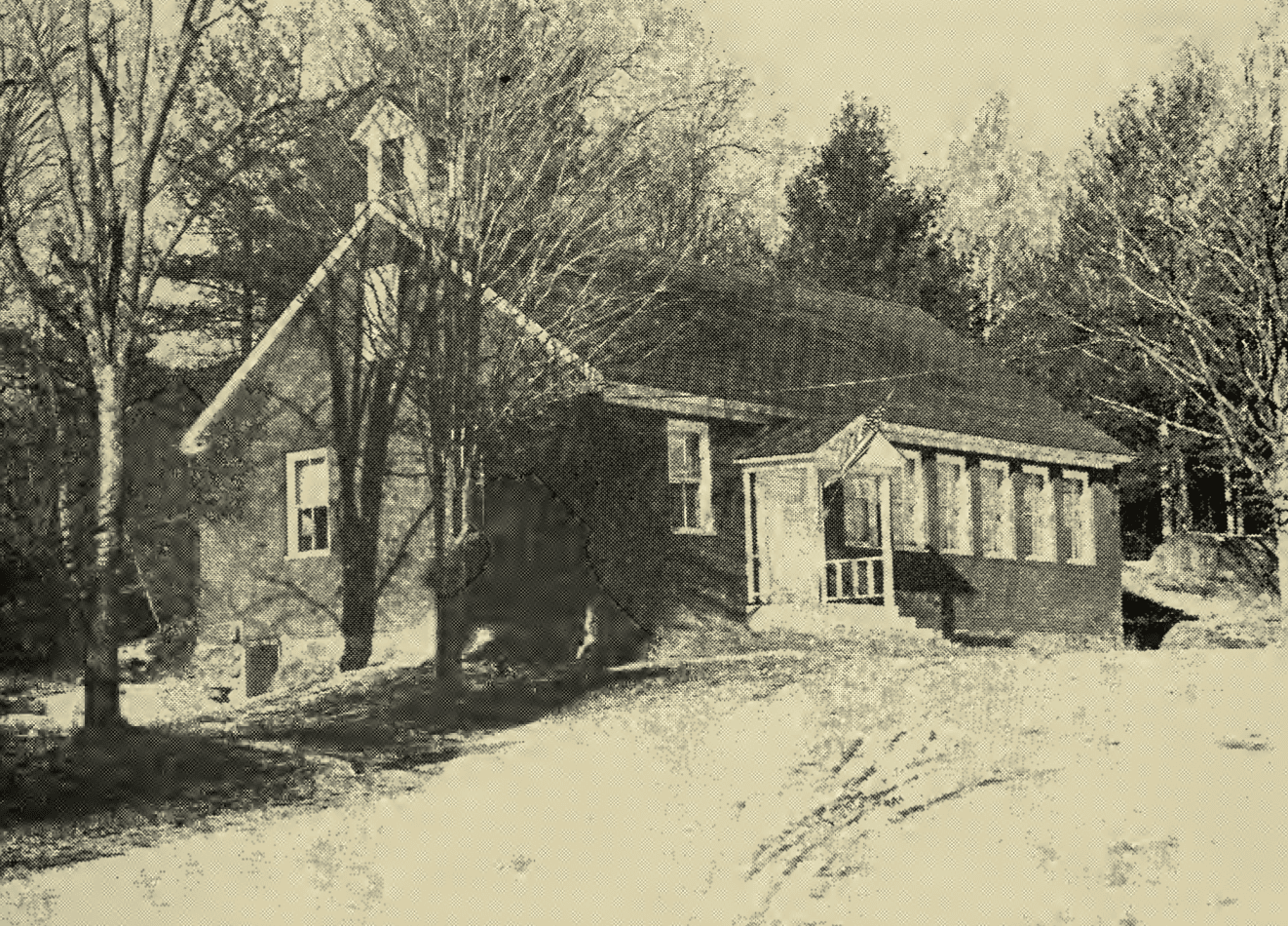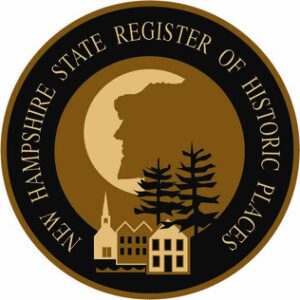The following was written by Jim Perkins Preservation Services. For further details, including all citations, please read the NH Division of Historical Resources inventory record.
Historically called the East Village or District No. 2 School, it originally served one of the town’s ten school districts. Croydon was one of eighteen towns on the eastern side of the Connecticut River created by Governor Benning Wentworth at the end of the French and Indian War. On May 31, 1763, Croydon’s charter was granted to sixty-five grantees from Sutton-Grafton, Massachusetts. Most were drawn from a third generation of white settlers in Massachusetts, where land for new homesteads was increasingly scarce.
The initial survey of Croydon included 23,040 acres encompassing the town’s six square mile grant. 1,040 acres were deemed un-improvable due to rivers, mountains, rocks, ponds and land reserved for roads, leaving 22,200 acres that were divided equally into sixty-nine shares, one for each grantee, one for the Governor, and the rest reserved for public benefit. Croydon’s natural landmarks include Croydon Mountain to the west, the highest point in Sullivan County, and the North Branch of the Sugar River to the east. Much of the land within Croydon is hilly and forested, with streams and ponds interspersed.
The Pinnacle is the town’s geographic center east of the mountain and was originally planned as the town center, where three of the first five settlers built cabins between 1764 and 1766. As with most newly granted towns along the western edge of New Hampshire, the early settlers of Croydon were focused on building mills and roads in order to attract more people and satisfy the terms of their grant. “By the autumn of 1768, Croydon was fairly well established with nine families, a grist mill and a sawmill.” As more settlers arrived six villages emerged: Four Corners, Croydon Flat, East Village, Ryder Corner, Brighton, and Under-the-Mountain.
“Our fathers were the friends of education. Although surrounded by all the difficulties and discouragements incident to a settlement in the wilderness, they devoted both time and money to the education of their children.” Four Corners was the first of the six villages to have a school. In 1770 its inhabitants voted to establish the first school district and “raised eighteen dollars to pay an instructor.” Classes were held in a private home until 1772 when “the first school-house, a small structure twenty feet square, was built [along Loverin Hill Road]… and eight pounds was raised for the purpose of education.”
The town’s second school district, in East Village, was formed in 1780 and a schoolhouse built on land then owned by Rufus Durkee (1785–1858) and today the site of Croydon Village School. District residents voted to “hire a male instructor for the three winter months and a female instructor to teach school the rest of the year.” Lawyer Samuel Morse (1784–1865) purchased Durkee’s land (130 acres), tannery, bark mill, and dwelling house in 1821, and Morse descendants continued to own the schoolhouse property until 1926, when it was bequeathed to the town along with the town hall lot.
From 1780 to 1830 Croydon saw steady population growth, peaking at just over 1,000 residents, of whom a third were infants and children; in 1830, there were 275 between the ages of six and fifteen. By 1834 these children were educated in ten school districts, each charged with staffing and maintaining its schoolhouse and leading to great disparity in conditions and quality of education. With the ensuing population decline in certain villages, the ten districts were reduced to six over the next twenty years. By the 1850s Croydon had a town school committee and superintendent. The committee’s 1852 report to Selectmen noted that District Nos. 9 and 10 were no longer under their supervision since those schools were located in other towns (Newport and Springfield) and that “within a few years, District No. 8 has been so dismembered by repeated acts of the town, as to be incapable of supporting a school.”
Several Croydon school districts had made significant building improvements. The Four Corners school of 1772 was rebuilt in 1812 after the first one burned, then in 1830 a “back house” was added, and in 1847 it underwent extensive renovations. Croydon Flat built a new schoolhouse (on the original site) with a brick façade in 1831, and East Village replaced its 1780 wooden schoolhouse with a load-bearing brick structure in 1835.

The East Village schoolhouse was consistently praised in school committee reports, and it is mentioned in the 1886 History of Cheshire and Sullivan Counties: “Here [at East Village]… is one of the best district schools in the county.” By 1915 the Four Corners school was closed and later sold. Just over twenty years later, in 1938, Ryder Corner school was closed, leaving just East Village and Croydon Flat in operation. By the 1930s public education was changed markedly by school district consolidation and by the advent of regional schools, enabled by improved transportation.
In 1925 a belfry was added to the southern end of the East Village School roof, a gift from Edwin B. Osgood (1859–1934) of Claremont, in memory of his mother Eliza F. Smart (1831–1909) who had attended the school. In 1932, East Village schoolhouse underwent a major renovation in order to reach modern standards: “It is with a great deal of pride that we are able to point to the very marked improvement which has been made in the Village School. This work was done with funds raised by the District rather than by utilizing any type of federal assistance. The building was entirely renovated during the summer vacation. This means that the interior and exterior of the building have been thoroughly repainted and put into first-class condition. (This included… three additional windows in the front.).” Electric lights were added three years later.

After 1952 instruction for grades 1–8 was split between the town’s two remaining schools: East Village and Croydon Flat. In 1954 East Village served 29 students in grades 5–8, while the younger students attended the Croydon Flat school. The following year, in January, the schools switched pupils so that East Village offered grades 1–4. Then in 1957 the Croydon Flat school closed and students in grades 5–8 went to Newport for instruction.
In 1997 kindergarten was added to the East Village school and in 2009 the class was moved into the Town Hall. Within two years the town purchased from Grantham a modular classroom, nicknamed “Big White,” installed just beyond the southwest corner of the “Little Red” schoolhouse. Croydon residents and contractors worked throughout the summer to prepare for its opening in September 2012. With this additional space, grades K–4 were educated in Croydon, while most older students attended Newport or Sunapee schools.
Since the late 1980s Croydon’s East Village school has made headlines and television appearances as one of a dwindling number of active one-room schoolhouses. Subsequent attempts to replace it with a new elementary school were rejected, preserving the one-room schoolhouse tradition. Following 2017 legislation, after leaving the Croydon school, students attend a mix of public and private schools based on family choice. The East Village School (District No. 2), or Croydon Village School, continues to make history as a public school still operating on its original 1780 site and within its 1835 brick walls.


